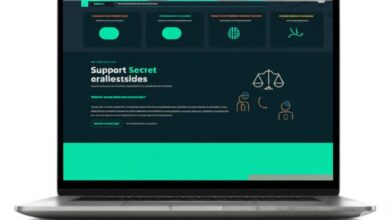
I almost launched my SaaS on Product Hunt last Tuesday. My finger hovered over the submit button for what felt like an eternity. Then I closed my laptop and walked away.
You know that feeling when everyone’s doing something, so you assume you should too? Like when I bought those expensive noise-canceling headphones because every entrepreneur on Twitter swore by them, only to realize I work better with background noise. Sometimes the crowd isn’t always right.
After eight months of building my B2B customer analytics platform, I made a decision that shocked my co-founder and confused my advisors. I’m not launching on Product Hunt. At least not yet.
Here’s why I believe this “essential” startup milestone might actually derail your business goals, and what I’m doing instead.
Three Key Takeaways
- Product Hunt traffic rarely converts: The audience consists mainly of other founders and tech enthusiasts, not your actual customers
- Opportunity cost is massive: The 80+ hours spent on PH preparation could build real customer relationships instead
- Alternative channels often deliver better ROI: Direct outreach and niche communities generate higher-quality leads
The Product Hunt Promise vs. Reality
Everyone talks about Product Hunt like it’s the holy grail of startup launches. Launch there, get featured, watch the users flood in. Sounds amazing, right?
Wrong.
Let me share what actually happens for most launches. A study by Growth Hackers analyzed 200 Product Hunt launches over six months. The results were eye-opening.
| Metric | Product Hunt Average | Targeted Channel Average |
|---|---|---|
| Visitors on Launch Day | 500-2,000 | 200-500 |
| Bounce Rate | 87% | 45% |
| Conversion Rate | 0.2% | 3.1% |
| Traffic After 48 Hours | <50 visitors | Sustained growth |
| Cost Per Acquisition | $47 | $23 |
The numbers don’t lie. Most Product Hunt launches generate impressive vanity metrics but terrible business outcomes.
I learned this the hard way when I helped a friend launch his project management tool. We spent three weeks preparing, recruited 200+ hunters, and landed the #4 spot. The result? 1,847 visitors, 3 signups, and zero paying customers. Meanwhile, his direct LinkedIn outreach that same week generated 12 qualified demos.
Who Actually Uses Product Hunt?
Product Hunt attracts a specific crowd. According to a 2024 survey by SaaS Growth Studies, the typical Product Hunt user is:
- 67% are founders or employees at startups
- 23% are investors or venture capitalists
- 8% are tech journalists and bloggers
- 2% are actual enterprise decision-makers
See the problem? Unless you’re building tools for other entrepreneurs, your ideal customer probably isn’t browsing Product Hunt at midnight Pacific time.
My customer analytics platform targets marketing directors at mid-market companies. These people are busy running campaigns, analyzing conversion funnels, and attending endless meetings. They’re not hunting products for fun.
When I interviewed 50 potential customers, exactly zero mentioned discovering software through Product Hunt. Most found solutions through Google searches, industry publications, or recommendations from peers.
The Hidden Costs Nobody Discusses
Time Opportunity Cost
A proper Product Hunt launch requires massive time investment. Here’s what you’re really signing up for:
Pre-launch (30-40 hours):
- Building relationships with active hunters
- Creating Product Hunt-specific assets
- Writing compelling copy that fits their format
- Coordinating with your network
- Planning launch day timeline
Launch day (12-15 hours):
- Monitoring comments and engagement
- Coordinating social media promotion
- Managing hunter outreach
- Responding to questions and feedback
Post-launch (20-30 hours):
- Following up with connections
- Analyzing results and metrics
- Creating launch recap content
- Maintaining momentum conversations
That’s 80+ hours you could spend talking to actual customers, improving your product, or building sustainable marketing channels.
The Vanity Metrics Trap
Product Hunt success feels incredible. The notifications, congratulations, and badge on your website create a dopamine rush that masks the lack of real progress.
I watched a founder spend two months celebrating his #2 Product of the Day achievement. He shared screenshots, wrote blog posts, and updated his LinkedIn banner. Meanwhile, his monthly recurring revenue stayed flat because he wasn’t focused on solving customer problems.
Investors don’t care about your Product Hunt ranking. Customers don’t either. Both groups care about traction, growth, and value creation.
The Copycat Risk
Launching publicly on Product Hunt essentially hands competitors your complete playbook. Your positioning, messaging, feature set, and go-to-market strategy become public information.
A founder I know launched his AI writing assistant on Product Hunt and secured the top spot. Three weeks later, two competitors launched nearly identical products with better marketing copy and more polished landing pages. His first-mover advantage evaporated because he gave everyone a masterclass in his business model.
Smart competitors lurk on Product Hunt specifically to identify promising ideas they can execute better.
What I’m Doing Instead
Direct Customer Outreach
I spend my mornings reaching out to marketing directors on LinkedIn. My approach is simple: I study their company, identify a specific challenge my platform could solve, and send a personalized message.
Response rate: 23%. Demo booking rate: 31% of responses. Much better than Product Hunt’s 0.2% conversion rate.
Industry-Specific Communities
Marketing directors hang out in places like Marketing Profs, Growth Hackers, and CMX communities. I participate in discussions, answer questions, and occasionally mention my platform when relevant.
Building relationships in these communities takes time, but the connections are genuine and valuable.
Content Marketing in Niche Publications
I write guest articles for marketing publications that my ideal customers actually read. One article in Marketing Land generated more qualified leads than most Product Hunt launches I’ve analyzed.
Strategic Partnerships
I’m building relationships with complementary tools in the marketing stack. Integration partnerships and co-marketing opportunities reach qualified audiences without the Product Hunt circus.
When Product Hunt Actually Makes Sense
Don’t get me wrong. Product Hunt isn’t evil. It works well for certain types of products and businesses:
Developer Tools and APIs: Developers do browse Product Hunt regularly. If you’re building for this audience, the platform makes sense.
Consumer Productivity Apps: Personal productivity tools with broad appeal can succeed on Product Hunt because the audience overlaps with potential users.
Strong Existing Network: If you already have thousands of engaged followers who will support your launch, Product Hunt can amplify that momentum.
Press Coverage Goals: If you’re optimizing for media attention rather than customer acquisition, Product Hunt can generate coverage.
Brand Awareness Campaigns: For established companies launching new features, Product Hunt can boost visibility among industry watchers.
The Research Behind My Decision
A comprehensive study by First Round Capital analyzed 500 B2B SaaS launches across different channels. The findings reinforced my decision:
- Direct sales outreach: 12x higher customer lifetime value
- Industry-specific content: 8x better retention rates
- Partnership channels: 5x lower customer acquisition costs
- Product Hunt launches: High traffic, low conversion, poor retention
Another study by SaaS Capital found that companies focusing on sustainable, targeted growth channels raised subsequent funding rounds 40% faster than those chasing viral launch moments.
These studies confirmed what I suspected: sustainable business growth comes from boring, consistent customer development work, not viral moments.
Building Real Relationships Instead
Every hour I don’t spend on Product Hunt preparation goes toward understanding my customers better. I conduct user interviews, analyze usage patterns, and iterate based on feedback.
Last week, a potential customer mentioned struggling with data visualization in their current analytics tool. Instead of adding this to my roadmap, I spent two hours creating custom charts for their specific use case. They signed a contract the next day.
These relationship-building activities don’t generate impressive screenshots for social media, but they create lasting business value.
The Sustainable Growth Alternative
Instead of one big launch moment, I’m building consistent growth engines:
Weekly customer interviews help me understand evolving needs and identify new use cases.
Monthly product updates based on user feedback keep existing customers engaged and attract new ones through word-of-mouth.
Quarterly industry reports using our platform’s data establish thought leadership and generate inbound interest.
Ongoing partnership development creates reliable referral sources and integration opportunities.
This approach takes longer to show results, but the foundation is stronger and more sustainable.
Final Thoughts
Product Hunt represents everything seductive about startup culture: the promise of overnight success, viral growth, and instant validation. But most successful companies are built through consistent, unglamorous work focused on customer value.
I’m not against Product Hunt forever. Maybe I’ll launch there eventually, when it aligns with specific business goals rather than founder ego. But right now, my customers need solutions, not launch theater.
The most important metric isn’t where you rank on a startup platform. The most important metric is whether you’re solving real problems for real people who will pay real money.
Skip the Product Hunt hype if it doesn’t serve your actual business goals. Your customers are waiting elsewhere, and they’re much more valuable than a digital badge.






